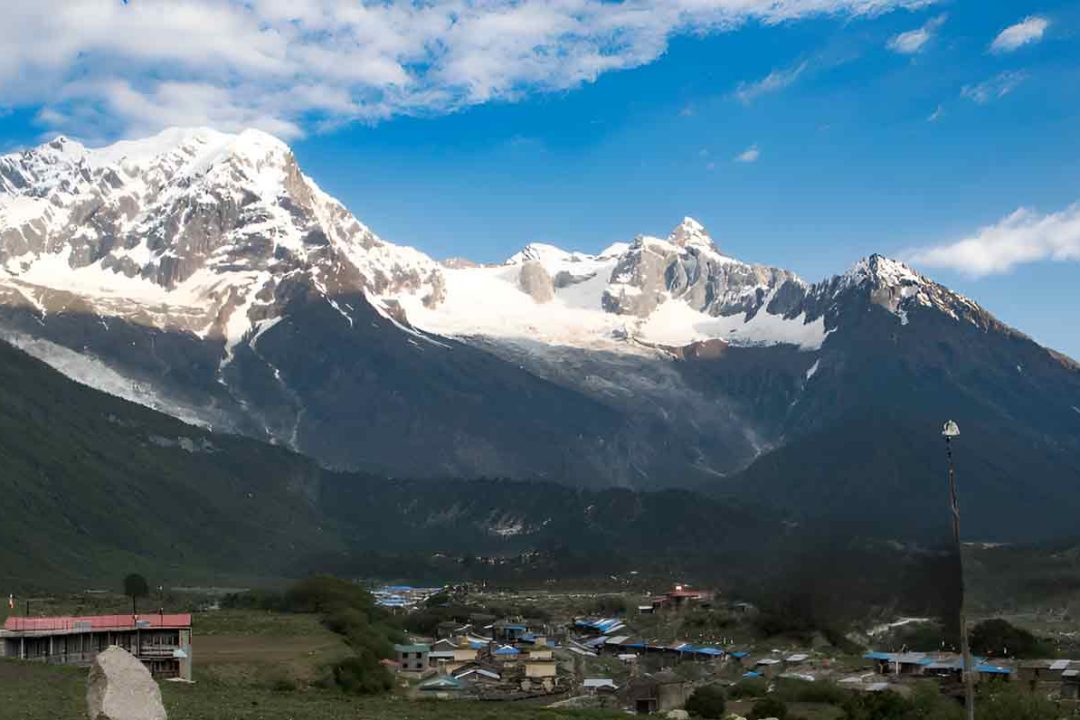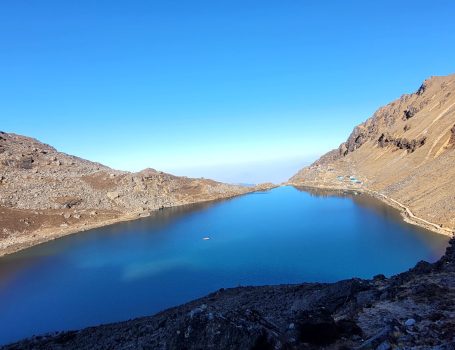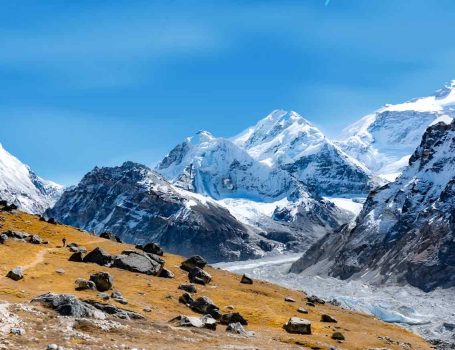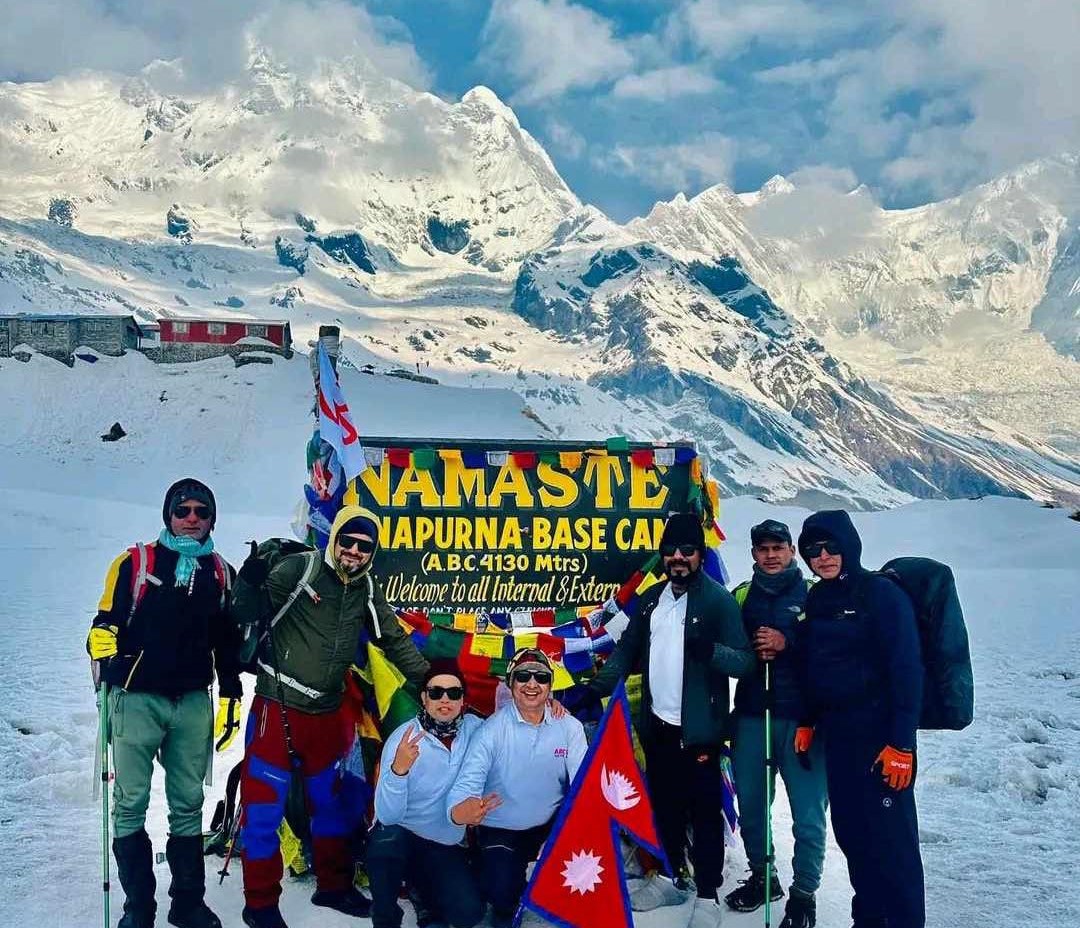Tsum Valley Trek
670

Trip Facts
- Duration 13 Days
- Trip Difficulty moderate
- Max. Altitude 3700m
- Start and End Kathmandu - Kathmandu
- Best Time Spring & Autumn
- Accommodation Tea House/ Lodge
Trip Highlights
- Have a breathtaking experience of a scenic drive to Machhakhola, which sets the stage for the next steps of adventure.
- Enjoy the scenery of terraced fields and rural Nepali villages, to the rugged terrain in the same trek.
- Visit and explore the rare Tibetan community that thrives on the lap of the Himalayas.
- Encounter with the ancient Monasteries and Tibetan stone houses.
- Exhilarating and strenuous hike to the Ganesh Himal with the striking panoramic views in the backdrop.
- Trek through the remote, secluded, and hidden valley of Tsum, which is equally adventurous and rewarding.
Overview
Our meticulously crafted Tsum Valley Trek with All Nepal Excursion Treks is an exhilarating journey towards the Himalayan alpine and secluded Manaslu region, blended with sweet cultural immersion and profound landscapes.
We begin with the lush subtropical forests on our way to Jagat and Lokpa. Then we enter the sacred sanctuary of Tsum Valley, captivated by Tibetan-influenced villages that blend with the cultural magnificence, prayer flags, ancient monasteries, and warm Tsumbas’ hospitality. Tsumbas are those who are indigenous to Tsum Valley. As we soak in the tranquility of the culture and hospitality of the Tsumbas, we begin our hike towards the Ganesh Himal Base Camp. This trek’s pinnacle journey is the hike to Ganesh Himal Base Camp with the captivating Manaslu in our backdrop.
This moderately difficult trek, which is supposed to be the best time to travel in the spring and autumn seasons, is navigated through the diverse terrains and awe-inspiring Himalayas as our backdrop. All Nepal Excursions is dedicated to full-fledged service for you for the best and awesome experience in the foothills of the Himalayas to achieve a secluded Himalayan and cultural grandeur.
We at All Nepal Excursion ensure you that we take care of every minute details till the last minute. Our expert guides will help you have the best experience throughout the journey. We make sure you have the best experience on the voyage of Manaslu Tsum Valley trek.
Why Should You Choose the Tsum Valley Trek?
Main Attraction: The Tsum Valley is a captivating journey towards the Ganesh Himal Base Camp, combined with the cultural serenity of Mu Gompa Monastery and pristine Himalayan vistas. This adventure is blended with spiritual tranquility in a remote setting.
History: Tsum Valley, aka “Hidden Valley,” is a mysterious space. It has preserved the ancient Tibetan Buddhist traditions and culture since the eighth century. It reflects the 1200-year-old historical significance of spiritual and cultural heritage.
Culture: We will be immersed in the Tibetan-influenced culture of Tsumbas. We have opportunities to encounter vibrant festivals, ancient chortens, and mani walls, where Buddhist hospitality and practices thrive and create a unique tapestry.
Geography: This valley’s diverse geographical terrain varies from the subtropical lands to the alpine meadows and snow-capped towering peaks of Ganesh and Manaslu. This trek features rugged trails to snow-capped peaks at their finest.
Flora and Fauna: This unique trek follows the path of lush green forests in the lowerlands and rugged Himalayas in the heights. The flora of pine and rhododendron and pine decorate the terrain, whereas the Himalayan thar and snow leopards are thriving in the wild regions, balancing the diverse Himalayan ecosystem.
Best Season
The best time to have a voyage to the Tsum Valley is the seasons of Spring and Autumn. These seasons offer diverse experiences with the stunning mountain views and comfortable temperatures to have a safe voyage to the Himalayas.
Spring (March to May)
Spring, which continues from March to May for the Tsum Valley trek, is one of the best times to have a voyage. This season provides the tranquility of lush and green blooming rhododendron forests, with the snow-capped peaks in relatively stable weather conditions. While we soak in the diverse natural geography of the region, the cultural immersion also fires up this season. Local festivals in the Tsum Valley’s villages provide us with the chance to get involved with the locals in their practices on our trek.
Autumn (September to November)
Autumn season in Nepal lasts for the months from September to November and provides us with the boasted crisp, clear skies and crystallized views of the Himalayas. The festival season buzzes on this land as the major festivals of Dashain and Tihar, with Mani Rimdu approaching this season. Autumn is reliable in its weather as it gets mostly fair, making the trail serene and peaceful for this adventurous voyage. We will have a buzzing experience of Tsum Valley and its surroundings this season.
Difficulties
The Tsum Valley trek presents us with diversified challenges due to its remote terrain and rugged trail. Higher altitudes that reach up to 4200m at Ganesh Himal Base Camp can get risky as we traverse the terrain. Proper acclimatization is always helpful for this trek, requiring great stamina and mental endurance for the trek. The weather also gets unpredictable at times, with the sudden rain and snowfall in such terrains. We must respect the cultural sensitivity of the Tsum Valley’s local population. We must prepare for the longer trekking days lasting for 5-8 hours a day. The teahouses can only offer the basic refreshment amenities.
Key Notes:
- Tsum Valley is a restricted area classified by the Nepalese Government; hence, a group of at least two trekkers is mandatory.
- Permits are released when applied through the registered trekking agency in Nepal. Individual trekkers are not allowed to enter this secluded region.
- All Nepal excursions will obtain all the necessary permits on your behalf once the booking is done and completed.
Accommodations on the Tsum Valley Trek
In the trek to the Tsum Valley, accommodation facilities are moderate and basic due to the rugged terrain and remote geography. The trek from Machhakhola is interspersed with teahouses that offer basic facilities like twin-shared bedrooms and shared bathrooms, with barely any facilities for hot showers. However, the bedrooms will be warm and cozy to ensure a comfortable sleep. Mu Gompa offers a dormitory-style of stay in the monastery. We recommend you carry a sleeping bag for yourself to have a warmer sleep on the colder nights.
Food Service on the Tsum Valley Trek
We will have a diverse range of options to choose the food we consume in Kathmandu restaurants, from Nepali to continental food. We will have the nutritious but limited options of food during the trek, as teahouses aren’t able to provide the necessary demands for the options. The teahouses offer the simple yet nutritious dal bhat, noodles, momo, pasta, and pancakes during the trek. Drinks like tea, coffee, boiled water, and hot lemon are available in the higher areas as well. Most meal options are vegetarian and vegan, which reflect the Buddhist tradition.
Altitude Sickness
Altitude
The Tsum Valley’s geography varies from the altitudes being lowest at 869m in Machhakhola to the highest altitude of 4200m in Ganesh Himal Base Camp. The total elevation gain will be about 4000m in the space of 10 days.
Acclimatization
The Tsum Valley’s steep and strenuous terrain needs to be adapted by gradual ascents and proper rest with nutritious intake. We have a rest day scheduled at an elevation of 3031m in Chhokangparo.
Precaution
Prevention of the altitude sickness problem is extremely necessary in treks like this. To prevent ourselves, we will ascend slowly, hydrate well, and eat high-calorie meals. Our guides will be monitoring you constantly if you show any preliminary symptoms.
Basic Treatment
For altitude-related sickness, the basic treatments are enough rest, proper hydration, and medications like Diamox for headache problems. Oxygen supplements are crucial in availability. However, we have to cure the symptoms in a mild way to preserve ourselves.
Rescue
Helicopter rescue in the Tsum Valley is possible despite the severe conditions. We recommend that you have an insurance policy that covers the helicopter evacuation in your high-altitude terrains like this. We will rely on the local teahouses for the initial communications.
Essence of Travel Insurance for the Tsum Valley trek
Travel Insurance is very essential for high-altitude trips and treks like this. Travel Insurance helps us to safeguard the unforeseen events. The travel insurance should cover medical emergencies, including altitude sickness and emergency helicopter evacuations. Insurance also provides security for your hard-earned money, so it is important to check and consult with your travel agent properly. All Nepal Excursion will help you find the best policy. Proper insurance always saves you the big bucks, so always buy travel insurance before you leave for a trip to another country.
Additional/ Optional Activities
- We can immerse ourselves in Gurung and Manange culture and witness the cultural chants, with serene views of Annapurna and Dhaulagiri peaks.
- We can browse Thamel’s bustling streets for Nepali pashmina, trekking supplies, or souvenirs before or after the trek.
- We must visit UNESCO sites like Boudhanath Stupa and Pashupatinath Temple whenever we are free.
- We will engage with locals on our rest days by being engaged in their daily chores and practices.






